Basic Design Module
The Basic Design Module provides fundamental guidelines for the initial design of drones and helps in quickly selecting essential design parameters. The final information provided includes the following:
- Propeller: Diameter, Pitch, Target RPM
- Motor Specification: Total Thrust, Net Thrust
- Current Consumption: Estimated Current Consumption
- Battery Flight Time: Safe Max Time, Max Time
- Weight Estimation: Total Weight, Estimating Required Thrust
Drone Selector
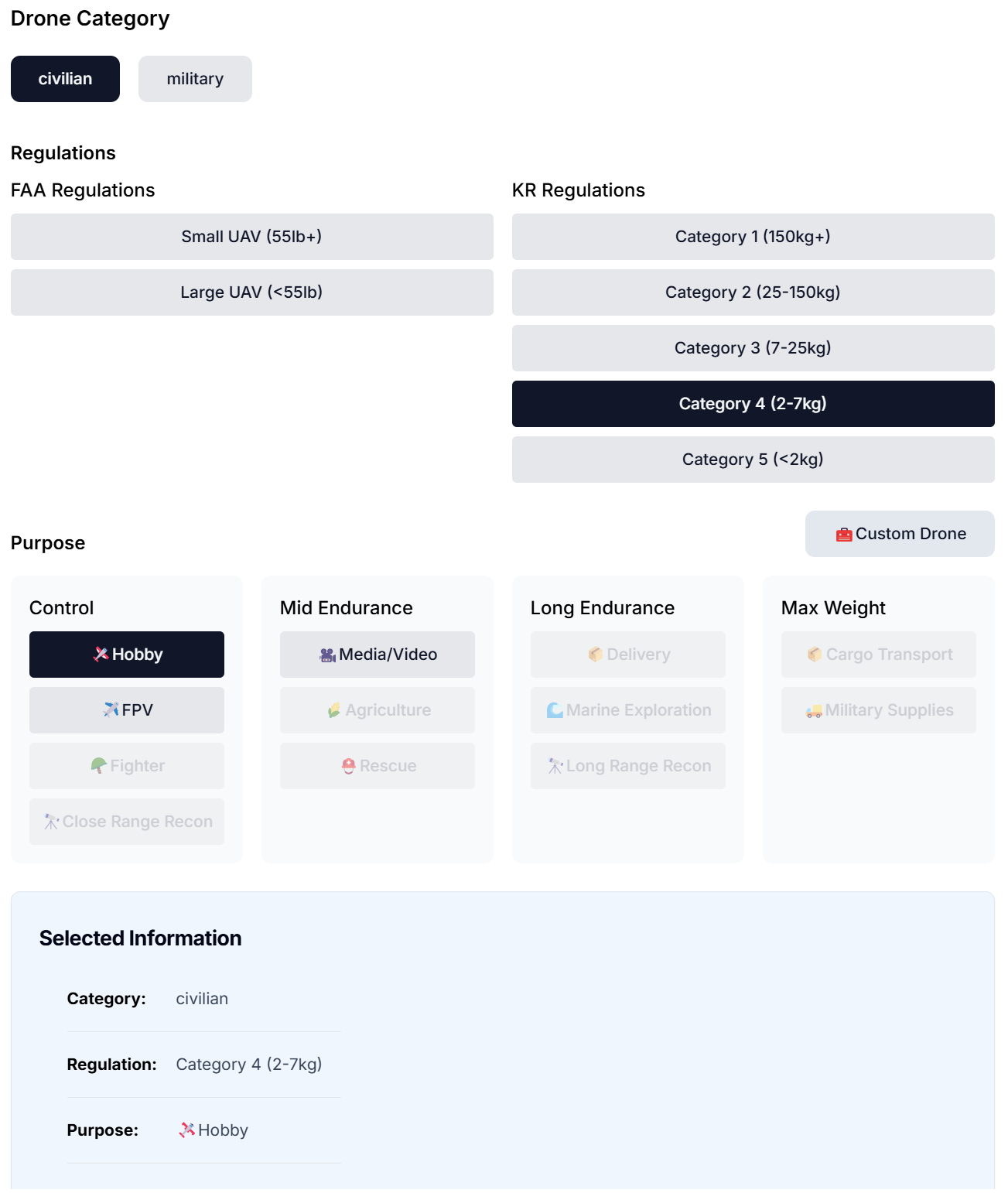
1. Drone Category
Choose the category of drone: civilian or military
2. Regulations
Select the regulatory category for the drone you intend to design.
Currently, there are two implemented regulations:
- FAA
- Ministry of Land, Infrastructure and Transport of South Korea(KR Regulations)
3. Purpose
Select the intended purpose for your drone design.
The available drone types vary depending on the selected regulation.
For example, a drone with a total weight of 2kg cannot be designed for delivery purposes.
Currently, the classified purposes are categorized into four main types:
- Control
- Mid Endurance
- Long Endurance
- Max Weight
If your drone does not fall into one of these four categories, select Custom Drone to design one with your own specifications.
Drone Calculator
Note: The Basic Design Module is still under active development.
Some calculator features may be incomplete or subject to change based on user feedback and ongoing testing.
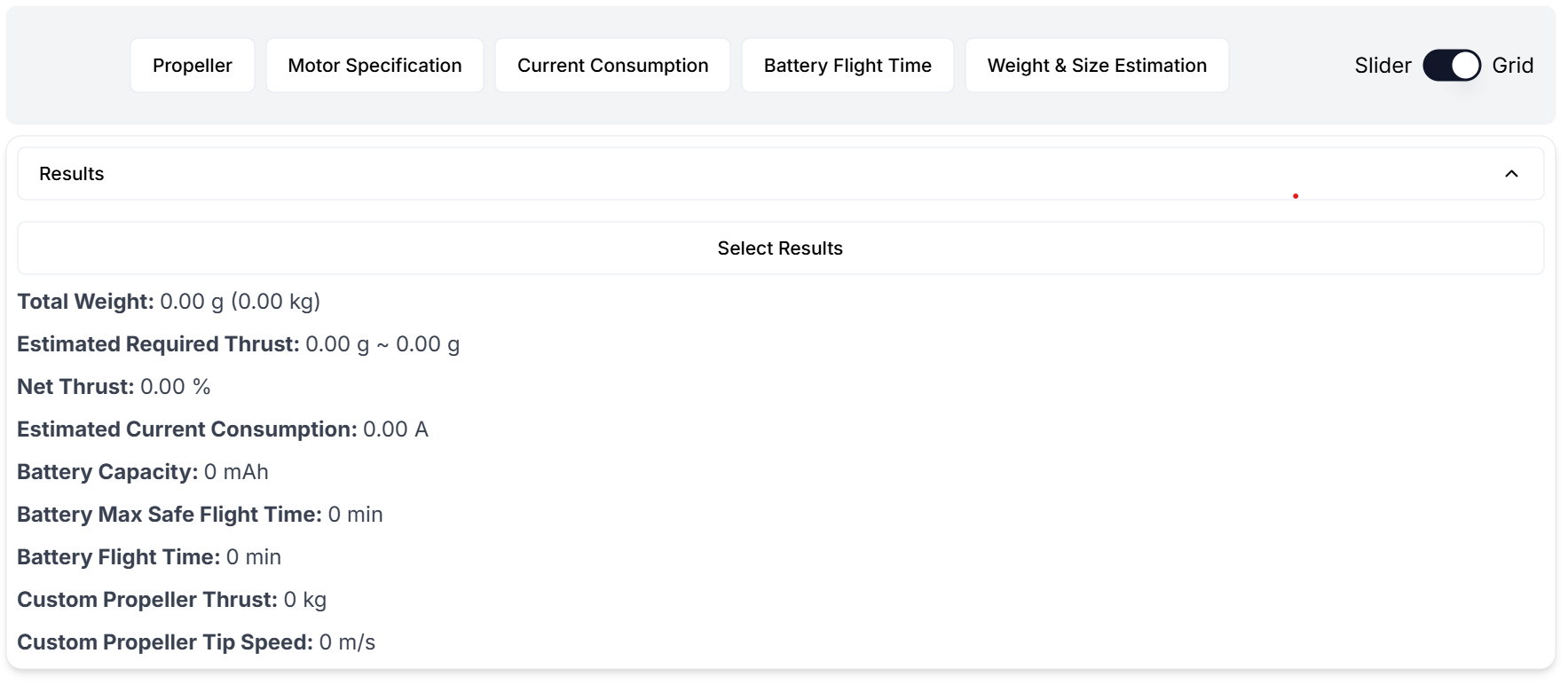
This calculator allows you to input necessary information fand derive key parameters for your drone design.
The current implemented calculator provides the following information:
- Total Weight
- Estimated Required Thrust
- Net Thrust
- Estimated Current Consumption
- Battery Capacity
- Battery Max Safe Flight Time
- Battery Flight Time
- Propeller Thrust
- Propeller Tip Speed
1. Propeller

General
Enter the maximum motor thrust (WATT), base motor RPM, and maximum motor RPM, then select the relevant propeller information from the generated data.
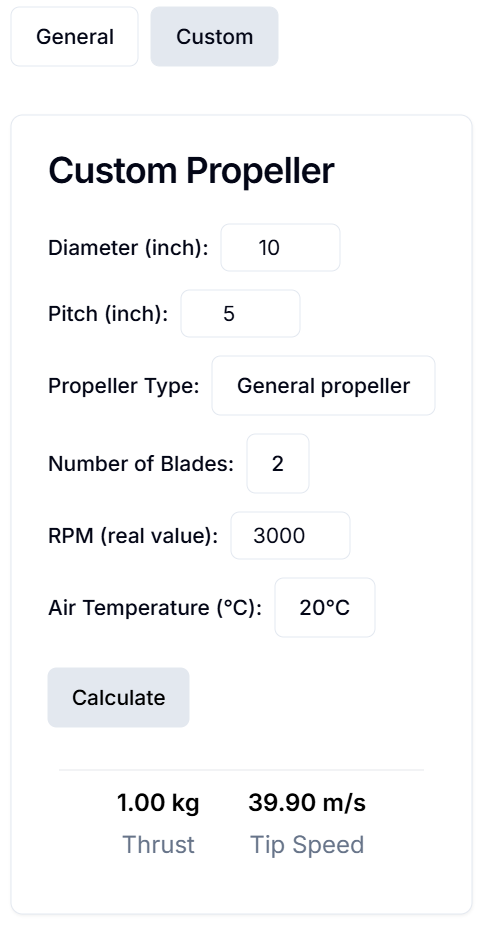
Custom
Enter the propeller diameter and pitch, then specify the propeller type, number of blades, RPM, and air temperature to calculate the tip speed and thrust.
2. Motor Specification
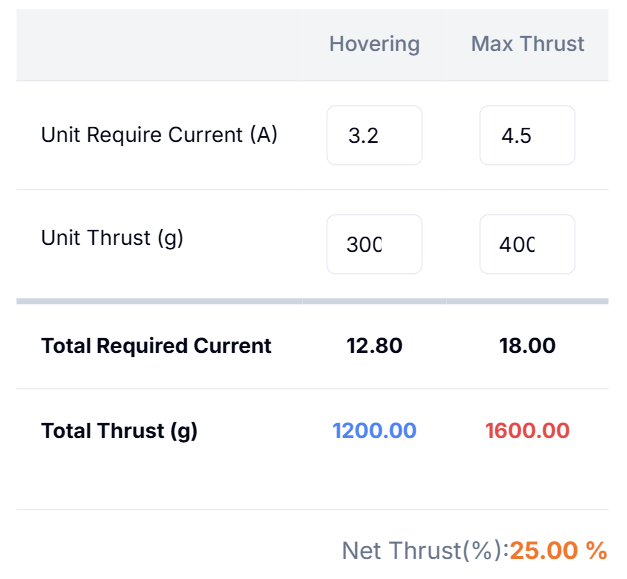
Enter the required current and thrust for both hovering and maximum thrust to estimate the total current, total thrust, and available thrust margin.
3. Current Consumption
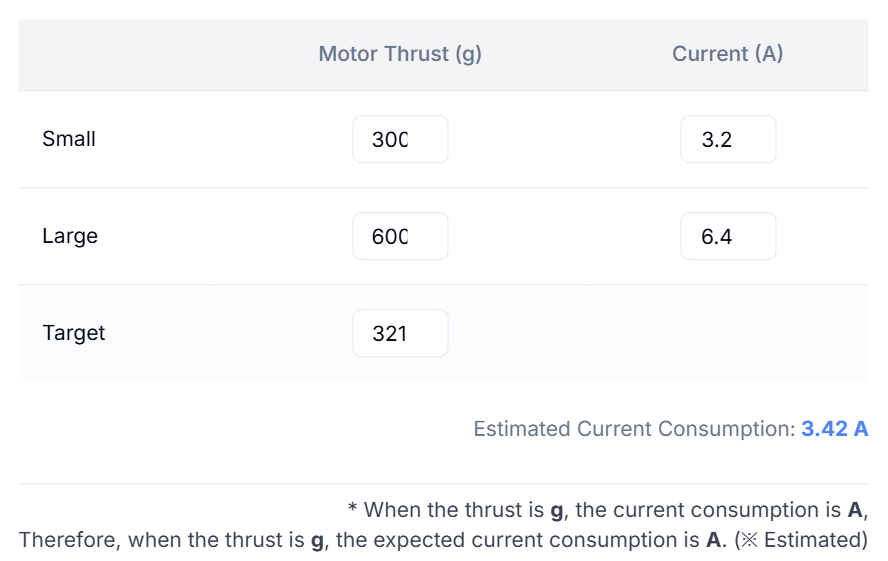
Referencing the motor specification table, input the thrust and current values for both low and high ranges, along with the target thrust to estimate the expected current consumption.
4. Battery Flight Time
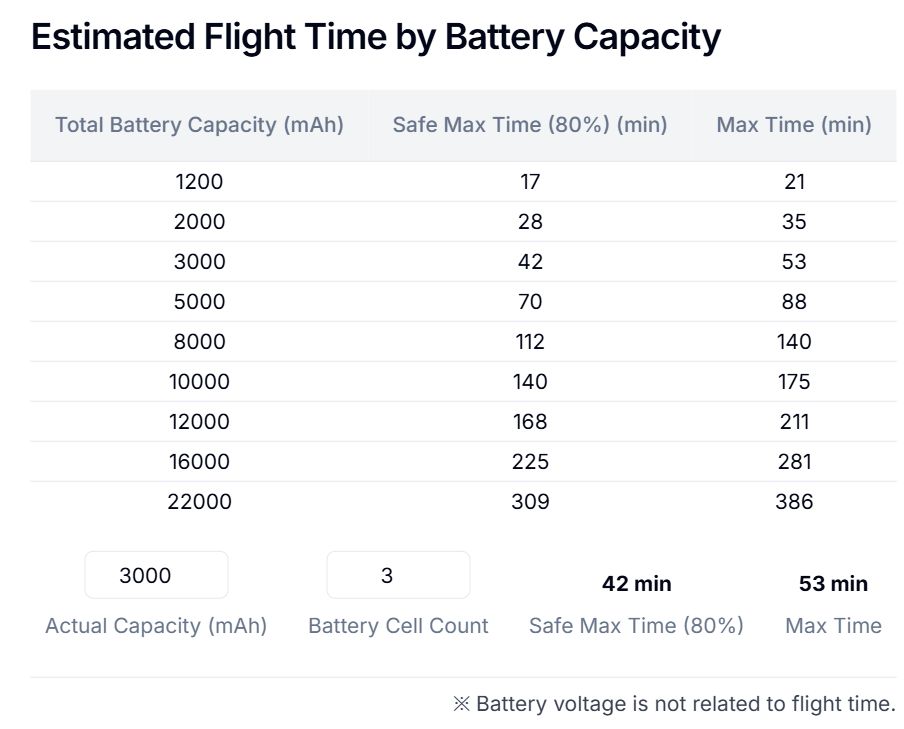
Enter the capacity and number of cells of the Li-Po battery to estimate the flight time.
In this process, estimated current consumption from step 3 is required for the calculation.
5. Weight & Size Estimation
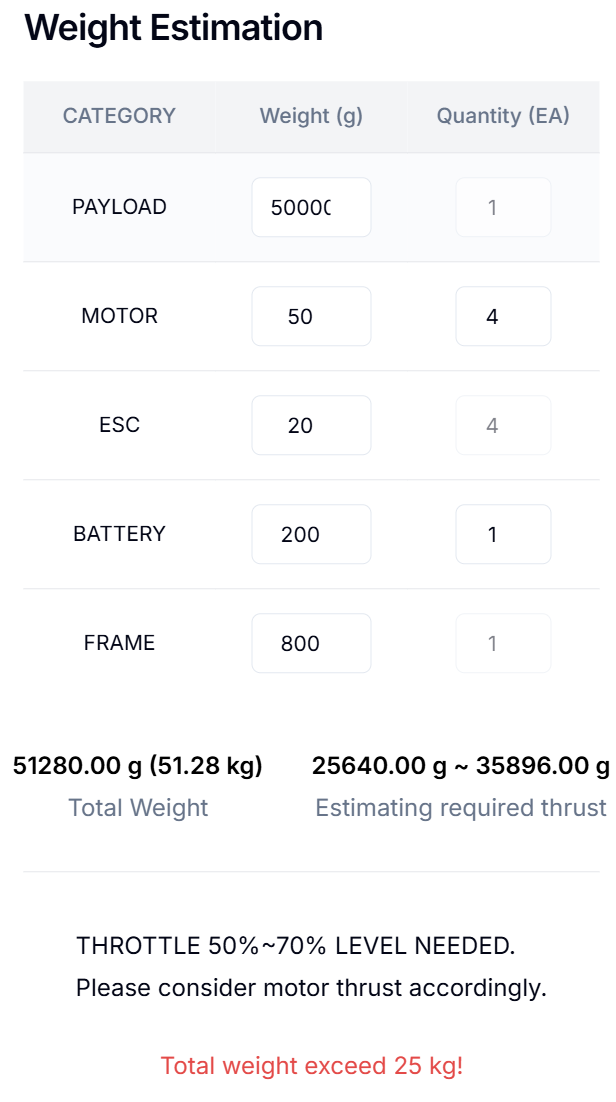
Enter the weight of the payload, motor, ESC(Electronic Speed Controller), battery, and frame to estimate the total weight.
- The number of motors and ESCs should be entered as the same value.
- The battery weight is automatically estimated in step 4, but it can also be manually entered.
- Depending on the selected regulation, a weight warning may be triggered.
Feedback & Future Updates
-
Accuracy Updates: Refined formulas for thrust-to-weight ratios based on real-world flight data.
-
Interactive UI: A more guided workflow with step-by-step inputs and a real-time preview of results.
-
Integration with Advanced Simulation: Seamlessly transfer design parameters to FEA/CFD modules for further analysis.
We welcome your suggestions for improving the calculators or add new parameters.
Stay tuned for regular updates as we refine the Basic Design Module with more accurate formulas, better visuals, and tighter integration with the Advanced Simulation Module.
Questions or suggestions? Check out our FAQ & Troubleshooting section or reach out via our support channels.